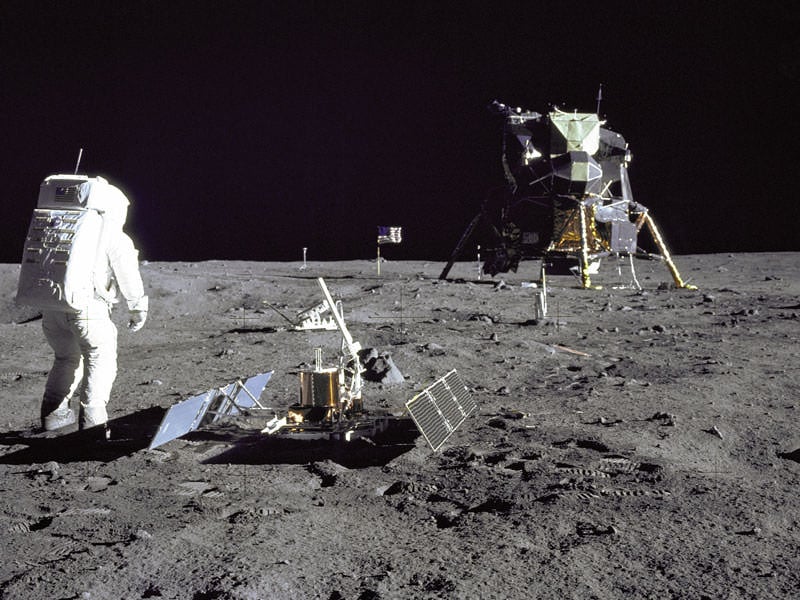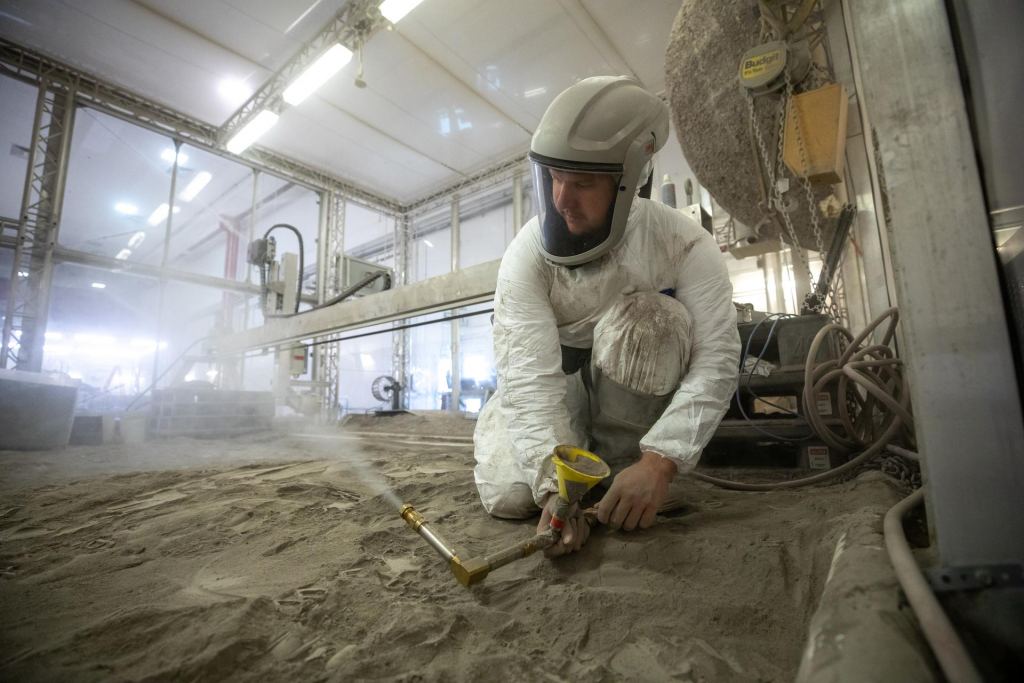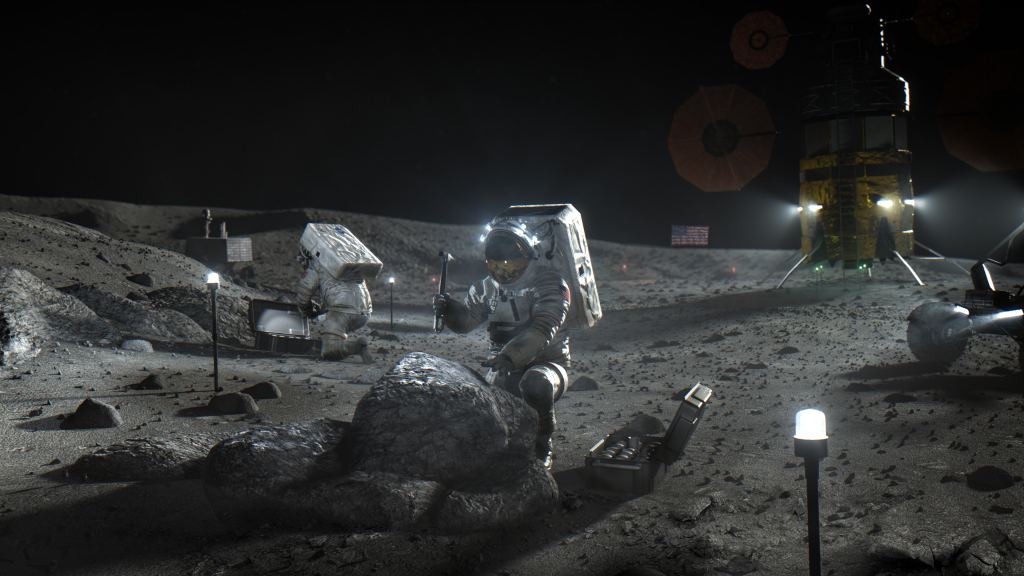Multiple missions are destined for the Moon in this decade. These include robotic and crewed missions conducted by space agencies, commercial space entities, and non-profit organizations. The risks and hazards of going to the Moon are well-documented, thanks to Apollo Program and the six crewed missions it sent to the lunar surface between 1969 and 1972. But unlike the "footprints and flags" of yesterday, the plan for the coming decade is to create a "sustained program of lunar exploration and development."
This means establishing a greater presence on the Moon, building infrastructure (like habitats, power systems, and landing pads), and missions regularly coming and going. Given the low-gravity environment on the Moon, spacecraft kick up a lot of lunar regolith (aka., "Moon dust") during takeoff and landing. This regolith is electrostatically-charged, very abrasive, and wreaks havoc on machines and equipment. In a recent study, NASA researchers Philip T. Metzger and James G. Mantovani considered how much damage all this regolith could inflict on orbiting spacecraft.
Philip T. Metzger is a planetary physicist and associate scientist at the University of Central Florida (UCF who recently retired from NASA's Kennedy Space Center, where he co-founded the KSC Swamp Works. James G. Mantovani is an astrophysicist and researcher with Exploration Systems & Development at the KSC Swamp Works. The paper that describes their findings, " The Damage to Lunar Orbiting Spacecraft Caused by the Ejecta of Lunar Landers," recently appeared online and is being reviewed for publication in
In addition to the Apollo astronauts, space agencies have sent robotic missions to the Moon for over six decades. The first missions were launched by the Soviet Union in 1959, the Luna 1* and 2* probes, which passed close to the Moon and landed on the surface (respectively). These missions have revealed volumes of data about the Moon's composition, structure, environment, and evolutionary history. This includes the fact that most of the lunar surface is covered with a fine powder known as lunar regolith (aka. "Moondust").
This dust is composed of silicate minerals created by billions of years of meteors and micrometeorites pounding the surface. Whereas Earth's fluffy atmosphere ensures that most of these space rocks burn up before reaching the surface, the Moon has no atmosphere to speak of. In addition, the airless lunar environment experiences no precipitation and no wind-driven erosion, leaving all this regolith jagged and edged. On top of that, the interaction between the surface and charged solar particles (aka. solar wind) has left the regolith electrostatically charged - causing it to stick to everything!
As Metzger explained to Universe Today via email, this makes lunar regolith a major hazard for robotic and crewed lunar exploration:
"Lunar regolith is a hazard for exploration because it is unlike terrestrial soil. So neither our technologies nor our physiology are adapted to it. It is very easy for a rover to get stuck in lunar soil because the fine particles cause it to have very high dilatancy, which is a property of soil that causes it to fluff up when a wheel drives over it. It is also a health hazard because the fine dust can get into the bottom of your lungs, where it can cause long-term degradation of your respiratory health."
For their purposes, Metzger and Mantovani explored the potential hazard regolith poses to takeoff and landing, resulting from the Moon being airless and having lower gravity (16.5% that of Earth). "The fine dust is accelerated by the rocket exhaust to extremely high velocity, and the Moon has no atmosphere, so there is nothing to slow the dust down until it impacts some other asset at the Moon, either on the lunar surface or in orbit," he added. "This can cause extremely high levels of sandblasting on those nearby assets."
In addition to missions in orbit, regolith kicked up by takeoff and landing can degrade elements on the surface - ranging from solar cells and thermal radiators to sensors and vehicles. Assessing the potential for damage requires that scientists simulate fluid dynamics on the lunar surface. This meant considering cratering and erosion regime physics models with ejecta trajectories and possible damage scenarios. As Metzger explained, this was possible by combining data from past missions with computer and physical simulations:
"To quantify the ejection of soil and dust from rocket exhaust, we have performed experiments, computer simulations, and analyses of the imagery sent back from previous lunar missions. For example, we have performed about 400 experiments in reduced gravity using the reduced gravity aircraft. These have enabled us to determine how much faster soil erosion will be in lunar gravity compared to Terrestrial gravity. We have also performed experiments in a vacuum chamber and have discovered that the erosion rate is faster when the gas is rarefied."
These vacuum chamber experiments largely consisted of aircraft landing in a chamber filled with JSC-1A, a lunar soil simulant created by scientists at the NASA Johnson Space Center between 2004 and 2008. One such experiment was conducted by Metzger in 2015 with his colleague John E. Lane, a researcher with the Granular Mechanics and Regolith Operations (GMRO) Lab at NASA's Kennedy Space Center. Metzger and Mantovani also considered previous work by Metzger and Lane, where they showed how the trajectories of ejecta come down to the angles, velocities, and sizes of particles.
They also compared this experimental data to images taken by the Lunar Lander Modules (LLMs) used by the Apollo astronauts. The results showed that ejecta would have varying effects on orbiting spacecraft, depending on the nature and elevation of their orbits. Moreover, said Metzger, the effects could still be problematic over time:
"We have found that the Lunar Gateway, which will be in near rectilinear halo orbit, high above the moon, will experience only slight damage from the ejector. However, it is important to know the amount of damage because it could affect sensitive instruments even at that altitude. It is much worse in low lunar orbit. If a spacecraft happens to fly by at the wrong time near a lunar landing, we estimate about 4% of its glass surfaces will be chipped. This damage is cumulative with multiple exposures. That could be bad for sensitive equipment such as cameras on board the spacecraft."
Through the Artemis Program, NASA and its partners will establish the long-term infrastructure to enable a "sustained program of lunar exploration and development." This includes the Lunar Gateway in orbit and the Artemis Base Camp on the surface, supporting regular robotic and human exploration. The European Space Agency also plans to establish the Lunar Village, an international research facility that will serve as a spiritual successor to the *International Space Station* (ISS). China and Russia have also partnered to create the International Lunar Research Station (ILRS) as a direct competitor to the Artemis Program.
A growing number of commercial space companies also plan to conduct regular missions to the Moon, providing everything from payload and crew transportation to lunar tourism. A growing human presence will mean greatly increased activity on the lunar surface, which could have repercussions. Said Metzger, assessing potential hazards and designing mitigation strategies is necessary today:
"With the expected growth in lunar landing traffic, this may become a serious problem that will require international coordination to manage. We need to ensure that spacecraft do not happen to fly through the ejecta of a lunar landing. We need to have agreements on when to build lunar landing pads to reduce the amount of ejecta. "We also need to agree on how much damage we are allowed to cause to each other's spacecraft, because the damage cannot be reduced to zero. In the airless environment of the moon, we will always be damaging each other's hardware. However, we need to agree that some de minimus level of damage is acceptable and we need to define what that level is."
*Further Reading: arXiv*
 Universe Today
Universe Today



